Recently I had the chance to attend HP’s Print Your Future event, held near the HP inkjet labs in San Diego. The event was hosted by HP’s IHPS division which makes the high speed continuous feed inkjet presses (T2xx, T3xx, T4xx series). I was able to tour the labs and see each of the three press models in operation.
The Holy Grail for high speed inkjet printing is to be able to print on standard coated offset papers with high quality. The issue is how to handle the interaction of the paper and the large amount of water in the inks. HP has been attacking this problem from the both the ink and paper perspectives. One advantage HP has is its vertically integrated manufacturing. It manufactures the wafers that go into the inkjet heads, the inkjet heads, the ink, a unique bonding agent, and even some specialty papers. (Although on the paper front it has teamed with Appleton Papers to work on solving the coated paper challenge.) This vertical integration allows HP the flexibility to design and make changes to any of the components as needed to create the most optimal solution. Progress continues to be made and today HP high speed inkjet presses can create high quality images on coated stock using HP’s bonding agent on regular coated paper or via papers treated by a number of paper suppliers.
Inkjet page volumes have been growing rapidly in the industry. HP alone has produced more than 29 billion pages on its presses since the launch in 2009(?). Roughly 60% of its output has been in publishing and 40% in direct mail and commercial print.
Just like digital color cutsheet presses compete with offset sheetfed presses, the high speed continuous feed inkjet devices compete with web offset presses. And the obvious first applications are for short runs where the low make-ready costs of digital have a cost advantage. This is typically how the investment for a new press is justified.
However, the better use of the technology is to use the capabilities of digital printing to create new value that didn’t exist before, not merely as a printing technology substitution.
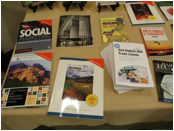 The most well-known application is books. Digital printing is allowing publishers to change their model of how they print and ship books to market. The old model was a “print to inventory” model where the publisher had to decide before it started selling how many books to print. Unsold books were returned for credit and pulped. This model was rife with waste and tied up valuable capital in inventory. Now publishers are moving to a “print on demand” model. They can now print and store much smaller quantities or in many cases they can print after receiving the order. While the cost per book for printing might be slightly higher the overall cost per book sold is less.
The most well-known application is books. Digital printing is allowing publishers to change their model of how they print and ship books to market. The old model was a “print to inventory” model where the publisher had to decide before it started selling how many books to print. Unsold books were returned for credit and pulped. This model was rife with waste and tied up valuable capital in inventory. Now publishers are moving to a “print on demand” model. They can now print and store much smaller quantities or in many cases they can print after receiving the order. While the cost per book for printing might be slightly higher the overall cost per book sold is less.
The theme for the event was Print Your Future illustrated by HP customers that are inventing new ways to add value. Here are a few examples
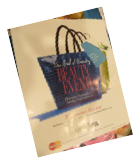
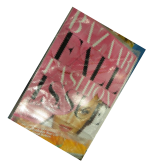 Kevin McVea of Strategic Content for Imaging demonstrated how it is changing the game for publishers of magazines. In this fascinating application it is working with magazine publishers and brand owners to create personalized ads that ride along with the magazine. For instance, Neiman Marcus and Hearst Publishing teamed up. Neiman Marcus wanted to drive traffic to its store and knew that many of its customers have a subscription to Harper’s Bazaar magazine. McVea and his team worked with Neiman Marcus to create a one-page personalized ad that was placed along with the magazine in a poly bag and mailed to customers. A special process was created to add the address information to the polybag ensuring each customer got the right ad. The personalized ad had an offer to give customers a free tote bag and product valued at $100, if they came into the store and spent $100.
Kevin McVea of Strategic Content for Imaging demonstrated how it is changing the game for publishers of magazines. In this fascinating application it is working with magazine publishers and brand owners to create personalized ads that ride along with the magazine. For instance, Neiman Marcus and Hearst Publishing teamed up. Neiman Marcus wanted to drive traffic to its store and knew that many of its customers have a subscription to Harper’s Bazaar magazine. McVea and his team worked with Neiman Marcus to create a one-page personalized ad that was placed along with the magazine in a poly bag and mailed to customers. A special process was created to add the address information to the polybag ensuring each customer got the right ad. The personalized ad had an offer to give customers a free tote bag and product valued at $100, if they came into the store and spent $100.
The campaign was so successful that it has now been run over a dozen times with various brands and offers. This campaign created millions of new page impressions that didn’t exist before. Very creative.
In Dallas, custom publisher, D Custom and Texas Farm Bureau Insurance have created a new custom magazine, Texas Heritage for Living, with the intent of forging deeper bonds with its customers – the kind that would result in trust, along with loyalty and retention. The content takes an informative approach to encouraging customers to increase and/or extend coverage.
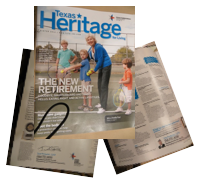 D Custom created a magazine that can be personalized by the independent agents that sell this carrier’s insurance policies. These agents distribute the magazine to their clients. The magazine is personalized in many places including the letter on the inside cover from the agent, the selection of stories, and the ads for that agent that appear on numerous pages throughout the publication. The magazines are produced on digital high speed inkjet presses and are a unique combination of a magazine and advertising. Circulation has reached 50,000 per month and the magazine is driving in-person account reviews for agents that allow them to discuss additional coverage options with existing customers.
D Custom created a magazine that can be personalized by the independent agents that sell this carrier’s insurance policies. These agents distribute the magazine to their clients. The magazine is personalized in many places including the letter on the inside cover from the agent, the selection of stories, and the ads for that agent that appear on numerous pages throughout the publication. The magazines are produced on digital high speed inkjet presses and are a unique combination of a magazine and advertising. Circulation has reached 50,000 per month and the magazine is driving in-person account reviews for agents that allow them to discuss additional coverage options with existing customers.
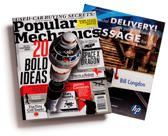 Printed advertising is still one of the most trusted advertising channels. It tends to be even more relevant in magazines where subscribers already have some known, shared interests. Publishers already try to further enhance the relevancy by having regionalized versions, but the ultimate objective is to have unique advertising that is truly personalized to the individual subscriber. HP worked with Popular Mechanics to create a 16-page personalized onset for the magazine to advertise and promote HP consumer printers. The onsets were personalized with several relevant elements including:
Printed advertising is still one of the most trusted advertising channels. It tends to be even more relevant in magazines where subscribers already have some known, shared interests. Publishers already try to further enhance the relevancy by having regionalized versions, but the ultimate objective is to have unique advertising that is truly personalized to the individual subscriber. HP worked with Popular Mechanics to create a 16-page personalized onset for the magazine to advertise and promote HP consumer printers. The onsets were personalized with several relevant elements including:
· The subscriber’s name incorporated into the ad
· Imagery from their metropolitan area
· Personalized URLs and QR Codes to register for a sweepstakes to win one of three printers
· The location of the retailer closest to the subscriber where they could buy HP printers
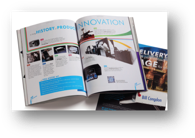 The Personalized URLs and QR Codes both drove subscribers to the same personalized page, but were separately tracked to measure who “typed” and who “scanned” to get to the pages. The sweepstakes entry did not appear with the subscriber’s information filled in – but could be auto-populated with that data by the visitor by clicking a checkbox. This clever approach made it easy for subscribers to fill out the form without the disconcerting effect of seeing personal information appear as soon as the page was loaded.
The Personalized URLs and QR Codes both drove subscribers to the same personalized page, but were separately tracked to measure who “typed” and who “scanned” to get to the pages. The sweepstakes entry did not appear with the subscriber’s information filled in – but could be auto-populated with that data by the visitor by clicking a checkbox. This clever approach made it easy for subscribers to fill out the form without the disconcerting effect of seeing personal information appear as soon as the page was loaded.
The personalized campaign was delivered to about 300 thousand subscribers out of the total population of roughly 1.2 million subscribers. These subscribers were selected from 12 specific metropolitan areas.
Readers responded positively to the campaign which had the following statistics:
· 5% hit rate on the Personalized URL
· 86% conversion rate where subscribers opted in and filled out the form
· 39% of site visits were from mobile platforms
 Creativity has no geography limits. Zeb, based in Belgium, created a new direct mail piece to help sell jeans. The piece is in the format of a personalized 8-page newspaper. Zeb inserts the name of the customer into fun and humorous headlines, but inside every article is selected based on the profile and previous buying habits of the customer. The newspaper is a huge hit among customers.
Creativity has no geography limits. Zeb, based in Belgium, created a new direct mail piece to help sell jeans. The piece is in the format of a personalized 8-page newspaper. Zeb inserts the name of the customer into fun and humorous headlines, but inside every article is selected based on the profile and previous buying habits of the customer. The newspaper is a huge hit among customers.
The power of digital print to go beyond a printing replacement technology to change supply chains, improve advertising or create loyalty is just starting to be tapped. As the technology continues to be adopted more and more companies will be printing their own future.















Discussion
Only verified members can comment.